Fall Lawn Care Checklist for Cincinnati, OH
BY MICHELLE SELZER | APRIL 7TH, 2023 | CINCINNATI, LAWN CARE, OHIOAs the temperature drops and the leaves fall, your lawn demands a little extra TLC. If, like most Cincinattians, you have cool-season grass, expect your grass’s growth to speed up and then go dormant by winter. Properly caring for your lawn in the fall gives it the strength to endure a harsh winter and flourish again come spring. So, make sure you cross everything off Cincinnati’s fall lawn care checklist.
In this article:
- Raking
- Mowing
- Dethatching
- Aeration
- Overseeding
- Fertilization
- Irrigation
- Herbicides
- Sprinkler winterization
- FAQ
Raking
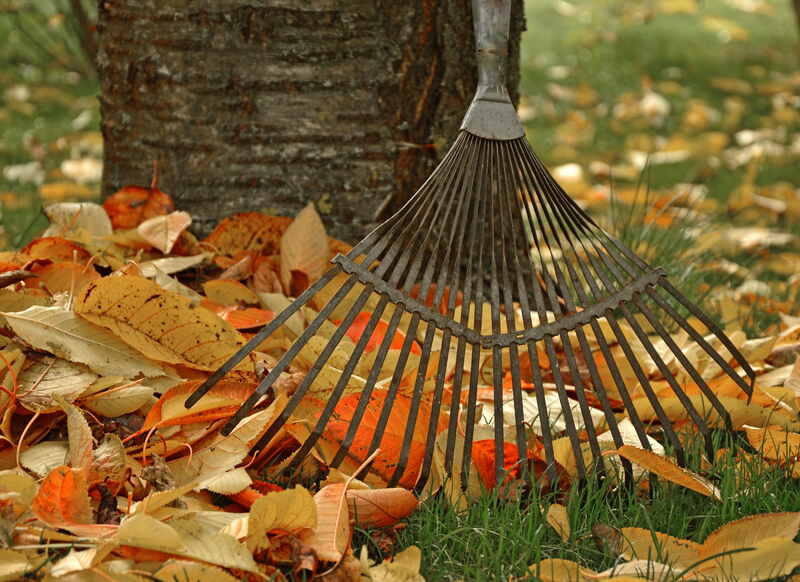
Photo Credit: Pxfuel
In late September to early October, our leaves change color, then begin to fall. It is essential to manage your fall leaves for the following reasons:
- Sunlight: When leaves cover the lawn, your grass can’t get the sunshine it needs.
- Pests: Many of Cincinnati’s worst pests are attracted to leaf piles.
- Disease: Wet leaves are a breeding ground for mold and fungus.
Small amounts of leaves can be mulched with a mower and left to fertilize the grass, but large amounts need removal. Therefore, when the leaves fall, most Cincinattians rake every few days.
Mowing
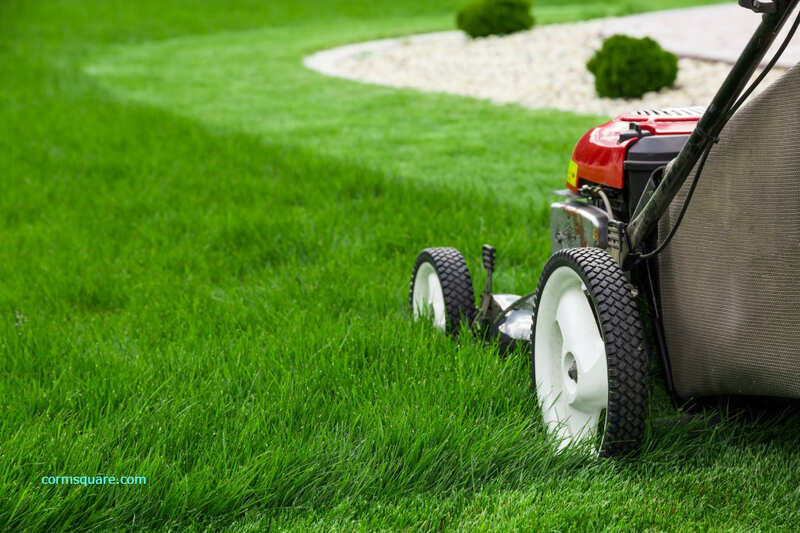
Photo Credit: Prasannanossam3 / Wikimedia Commons / CC BY-SA 4.0
When fall is in the air, lawn mower engines blare throughout The Queen City. Most Cincinnatians have cool-season grass that flourishes in the spring and fall, so be prepared for rapid fall growth. The table below shows the recommended mowing heights for the best grass types in Cincinnati.
| Grass Type | Mow Height |
| Kentucky Bluegrass | 2.5 – 3.5 inches |
| Perennial Ryegrass | 1.5 – 2.5 inches |
| Fine Fescue | 2.5 – 4 inches |
| Tall Fescue | 3 – 3.5 inches |
Proper lawn mowing practices include the following:
- One-third rule: If you want your grass to stay healthy and strong, never cut more than one-third of its height. For example, if your grass is 3 inches tall, don’t cut off more than 1 inch.
- Mowing patterns: Grass tends to grow in the direction it’s mowed, so alternate your mowing pattern to encourage the grass blades to grow straight up.
- Sharpen blade: Sharp mower blades make clean cuts.
- Wet grass: Avoid mowing your grass when it’s wet. Mowing wet grass can damage your mower, spread fungi, and result in an uneven cut.
- Mulched clippings: Instead of bagging grass clippings, mulch them to help fertilize the lawn. According to the Univerisity of Missouri, grass clippings can cover up to 25% of your lawn’s nutritional needs.
- Last mow: When the weather cools to an average temperature under 50 degrees Fahrenheit, it’s time for the last fall mow. This typically occurs late in the fall. The last mow should be shorter than usual to prevent snow mold. Most grass types can be mowed to about 2.5 inches.
Dethatching
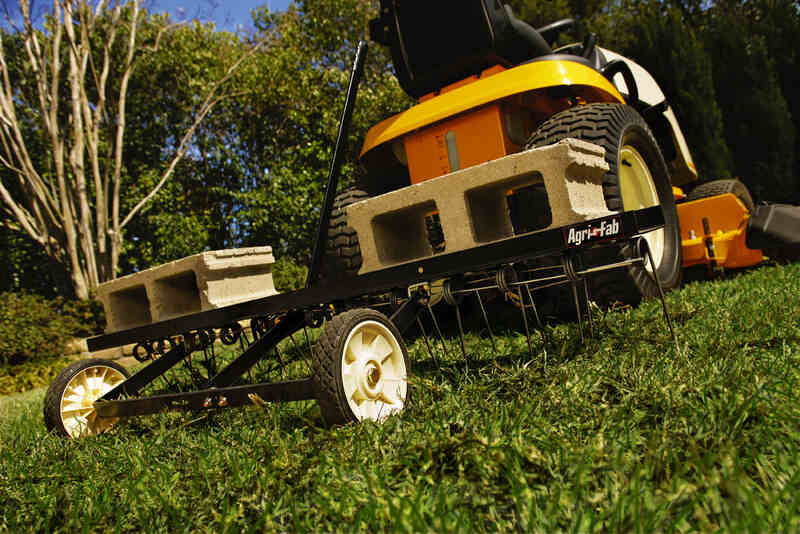
Photo Credit: Agri-Fab / Wikimedia Commons / CC0
A layer of organic debris called thatch builds up between your grass and the soil. You should dethatch your lawn before the thatch becomes 1/2 inch thick. Dethatching is important for the following reasons:
- Pests: Many lawn pests breed in thick thatch.
- Diseases: Lawns with excess thatch are prone to diseases.
- Drainage: Thatch blocks water and fertilizer from reaching the grass’s roots.
You can use a power rake to dethatch your lawn, and the best time to do so is early fall, right before aeration.
Aeration
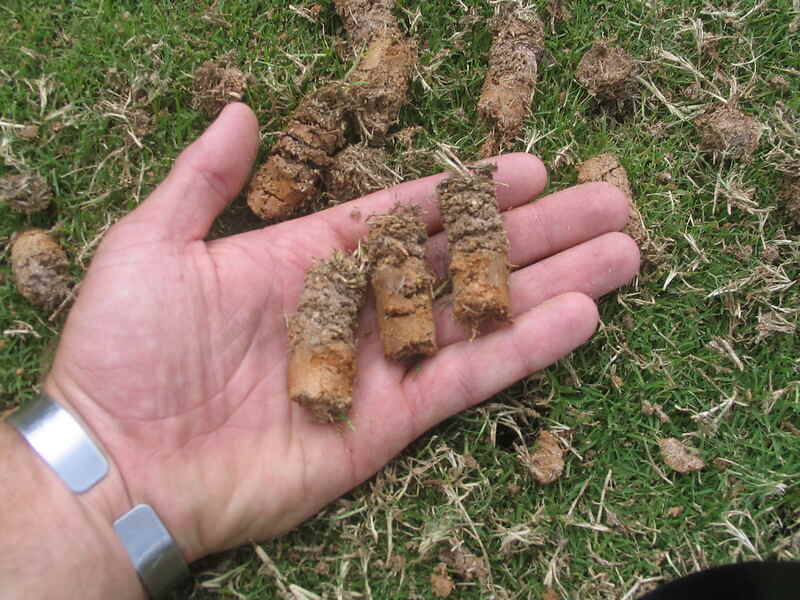
Photo Credit: Oregon State University / Flickr / CC BY-SA 2.0
Cincinnati’s soil contains a lot of clay, which makes it prone to soil compaction and drainage issues. Aerating your lawn in September or October will improve soil drainage and prevent the soil from compacting. Thus, after aeration, more water and fertilizer reach your grass’s roots allowing your lawn to grow lush and strong.
By improving the soil’s drainage, lawn aeration also helps you avoid the following problems:
- Pests are often attracted to wet soil, so aeration reduces pests.
- Diseases, such as fungal infestations, thrive in damp soil, so aeration reduces your lawn’s risk.
- Weeds can drink excess water left by poorly drained soil and use that water to take over your lawn.
There are three main types of lawn aeration, as shown in the table below.
| Aeration method | Description |
| Liquid aeration | A liquid solution that claims to aerate, but Colorado State University says it isn’t effective. |
| Spike aeration | Solid tines puncture the soil. |
| Core aeration | A machine pushes hollow tines into the ground and removes plugs of soil. |
Core aeration is the best type to use on Cincy’s soil.
Overseeding
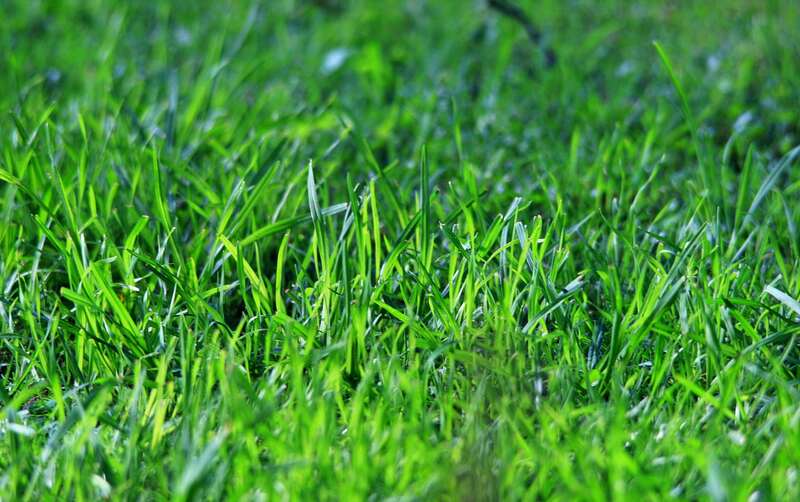
Photo Credit: PublicDomainPictures
Right after aerating, is the best time to overseed your lawn. Many Cincinnati homeowners overseed with seeds from cultivars that highly resist insects and diseases. Overseeding can also improve your grass’s tolerance to drought, shade, and foot traffic. As a result of overseeding, your lawn will be fuller and require less water, fertilizer, and chemical treatments.
However, be careful if you plant to treat your lawn with herbicide. Herbicides may hinder the growth of new grass seeds.
Fertilization
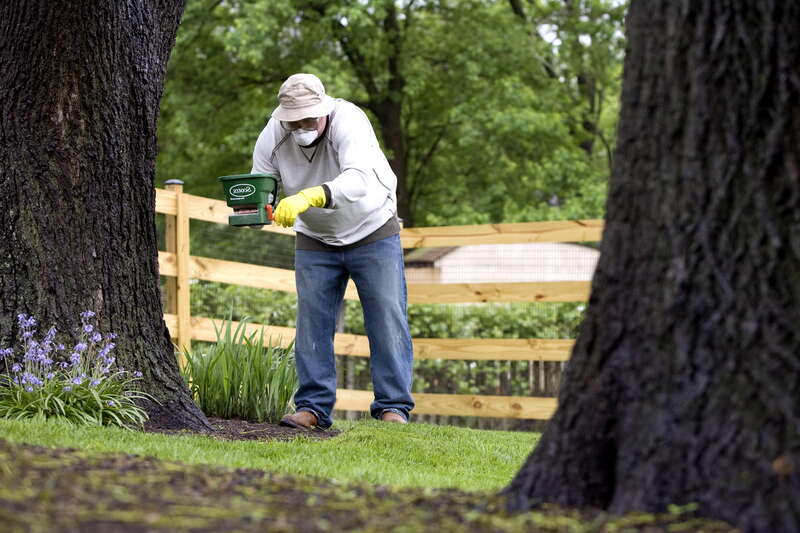
Photo Credit: Pixnio
Cool-season grass requires fertilization in the fall, and here are some tips to help you:
- Early fall: Most Cincinnati lawns need fertilizer early in the fall and it is best to apply after aeration.
- Soil test: A soil test will tell you what fertilizer is best for your grass.
- Nutrients: Lawn fertilizers contain nitrogen, phosphorus, and potassium; lawns typically need a lot of nitrogen in the fall.
- Lawn spreader: Use a lawn spreader to apply fertilizer.
- Measure: Find out how much fertilizer you need by measuring your lawn.
Irrigation
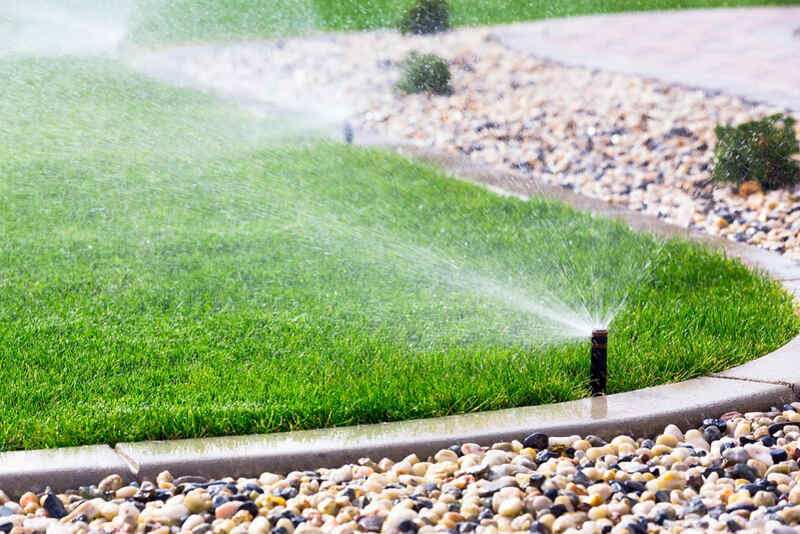
Photo Credit: Aqua Mechanical / Flickr / CC BY 2.0
As long as it stays above 40 degrees Farenheit you must continue watering your lawn. Use the following watering tips to ensure your grass thrives:
- Time: Water your lawn before 10 a.m. to reduce evaporation.
- Drainage: Make sure the soil drains well.
- Sprinklers: Sprinkler systems with a timer help you water your lawn efficiently. However, should a sprinkler spring a leak, fix it as quickly as possible.
- Know your grass: Ensure it receives the amount of water recommended for its grass type.
Herbicides
Applying pre-emergent herbicides in the fall will prevent winter weeds from sprouting. Common winter weeds in Cincinnati include:
- Chickweed: Apply herbicides that contain benefin+trifluralin, bensulide, or pendimethalin in September to prevent chickweed from sprouting in the winter.
- Henbit: In September, apply an herbicide that contains prodiamine, dithiopyr, isoxaben, pendimethalin, or oryzalin to prevent the growth of henbit.
- Wild onion: Unfortunately, there aren’t any pre-emergent herbicides that work on wild onion or wild garlic.
However, proper lawn care is the best way to prevent the worst weeds in Cincinnati. Healthy grass can stand strong against weeds.
Sprinkler Winterization
When water freezes, it expands, so any water left in your irrigation system can cause its parts to break. Drain all the water from your sprinklers when the temperature drops below freezing, which typically occurs at the end of October.
FAQ About Fall Lawn Care
Cincinnati’s most infamous fall pests include the following:
- Spiders reemerge when the weather warms up above 40 degrees Fahrenheit.
- Ants can surface any time of year but are more prone to enter your home in the colder months.
- Earwigs are most noticeable from July through August.
Our spring lawn care tips for Cincinnati include:
- Mowing regularly to your grass’s recommended height.
- Watering the grass deeply but infrequently.
- Aerating to improve soil drainage.
- Pre-emergent and post-emergent herbicides are used to control weeds.
- Inspect the lawn frequently to detect pests, weeds, and diseases.
You should avoid watering your lawn at night because it increases the chance of it getting fungal diseases.
Final Thoughts
The best way to take care of fall lawn care is to have a professional do it for you. The temperature is dropping, and soon we will be back in brewery season. So instead of working hard in the yard, you should enjoy what’s left of our pleasantly cool fall weather. Call a Cincinnati lawn care pro to take care of your fall lawn care needs.
Main Image Credit: Rose Hill Avenue, Cincinnati / Warren LeMay / Flickr / CC0 1.0